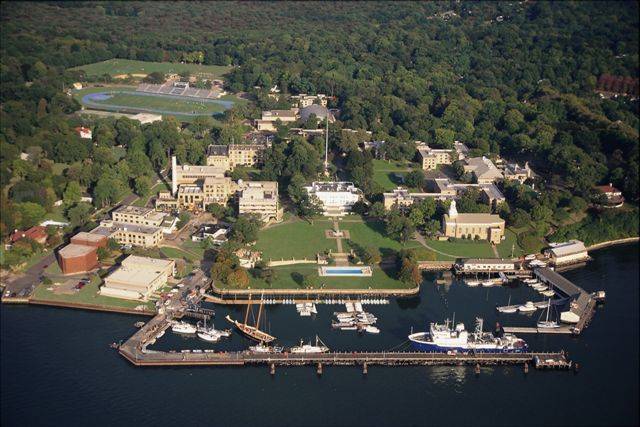Kings Point Alumni Release Commemorative Video
Video marks Academy's 75th year and those who made the ultimate sacrifice.
Alumni of the United States Merchant Marine Academy (USMMA) released an inspiring video to commemorate the 75th anniversary of the institution and memorialize midshipmen who have died in service to the nation. Over the summer, the USMMA Alumni Association and Foundation (USMMA-AAF) has been executing a multi-faceted campaign to mark the federal academy's decades of service and the foundational role it plays in our nation's security and economic well-being.
"We really hope this anthemic video connects the dots for our fellow citizens," said Capt. James Tobin, President of the USMMA-AAF. "Throughout history, the work—and sacrifices—of our graduates in defending the nation has not been fully understood."
he USMMA-AAF's campaign is designed to remind the nation how vital the Academy is to both our national security and global commerce, and of the importance of maritime security in turbulent times.
Watch the anthemic video below:
The campaign website can be found here.
The United States Merchant Marine Academy, located in Kings Point, N.Y., was formally established in 1943 for the purpose of, as President Roosevelt said when he spoke at its opening, "serv[ing] the Merchant Marine as West Pointserves the Army and Annapolis the Navy."
Today, USMMA provides the nation with a reliable supply of highly-trained merchant marine officers dedicated to serving the Nation's national defense objectives. Like the other four federal academies (West Point, Naval Academy, Air Force Academy, Coast Guard Academy), USMMA was created by statute. These five academies are the only undergraduate institutions of higher education that are part of the federal government.
Midshipmen Today
Today's graduates incur a five-year federal service obligation and an eight-year armed forces reserve obligation. Graduates meet their five-year obligation by serving as officers in the merchant marine or, upon approval, entering active military duty.
USMMA is the only school in which 100 percent of graduates earn a merchant marine license and incur an obligation to the U.S. government. USMMA graduates play a vital role in maintaining the maritime strength and security of the nation, making up more than 80 percent of the Strategic Sealift Officer Program force.
USMMA midshipmen hail from diverse backgrounds and almost every state in the nation, and the USMMA was the first of the federal service academies to admit women in 1974 and graduate women in 1978, a full two years before the other academies. In addition to the rigorous academic and physical requirements for admission, applicants must be nominated by a U.S. Representative or Senator.
USMMA educates a regiment of approximately 950 midshipmen each year. While the Academy still trains for the deck and engineering departments of U.S. flag merchant ships, course offerings have evolved to adapt to changes in the industry and advancing technology. Midshipmen now select from among five different courses of study: marine transportation; logistics and intermodal transportation; marine engineering; marine engineering systems; and marine engineering and shipyard management.
ll midshipmen complete additional course requirements in the sciences, mathematics, humanities, and Naval Science for a Bachelor of Science degree.
"The World is Our Campus"
This motto is emblematic of Sea Year, the U.S. Merchant Marine Academy's signature training program. Sea Year is fundamental to the world-class maritime education provided by USMMA and is mandated by Congress. It is an immersive program in which midshipmen are assigned to commercial vessels as officers in training to learn maritime skills in a real-world environment. Sea Year is unique to USMMA – nothing comparable is offered at any other college or university, including the four other federal service academies.
USMMA midshipmen complete a challenging four-year program that includes accumulating 164 credit hours during their three years at the Academy and their 12 months of hands-on training at sea, during which they earn at least 21 academic credits while training on a diverse portfolio of vessels such as container ships, roll-on-roll-off ships, bulk grain and ore ships, and oil tankers.
In place since the Academy's founding in 1943, this partnership between the Academy and commercial shipping companies that take midshipmen aboard their ships for training has been one of the most successful and enduring public-private partnerships in U.S. history.















